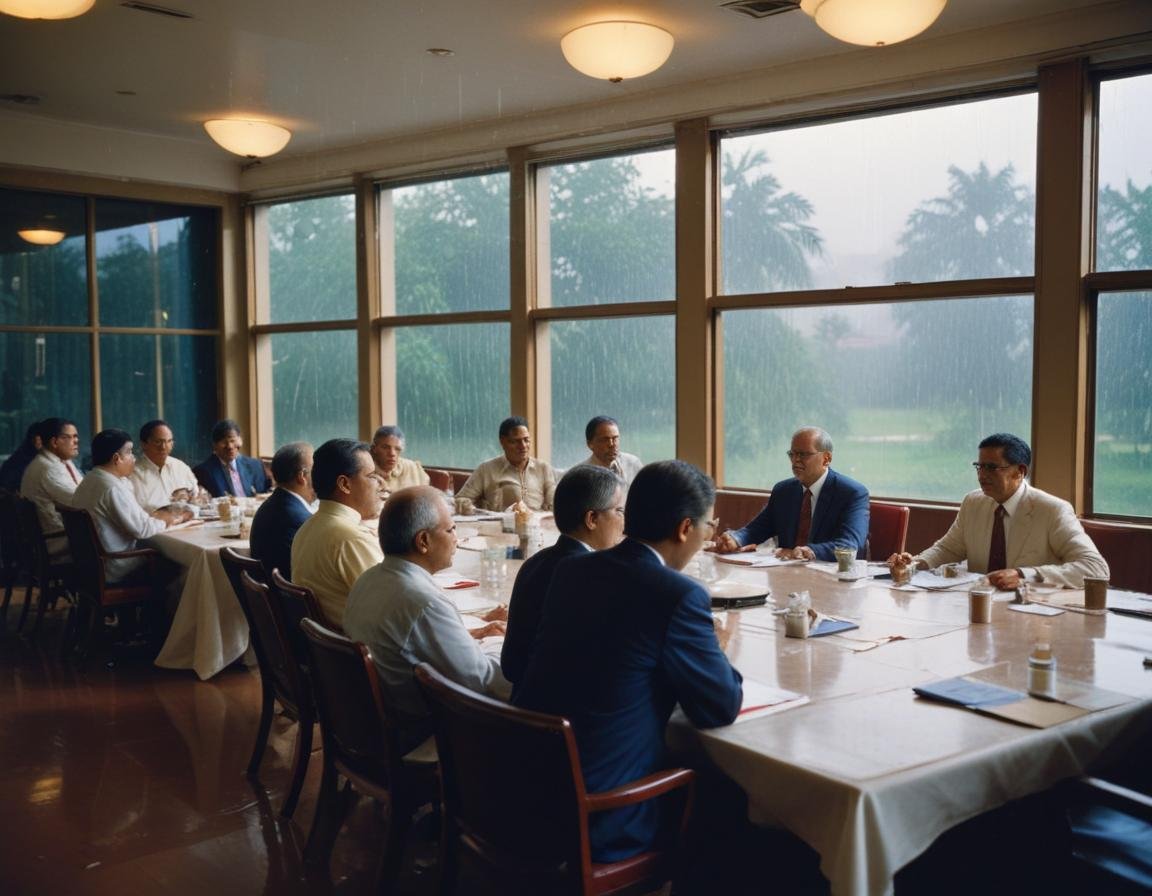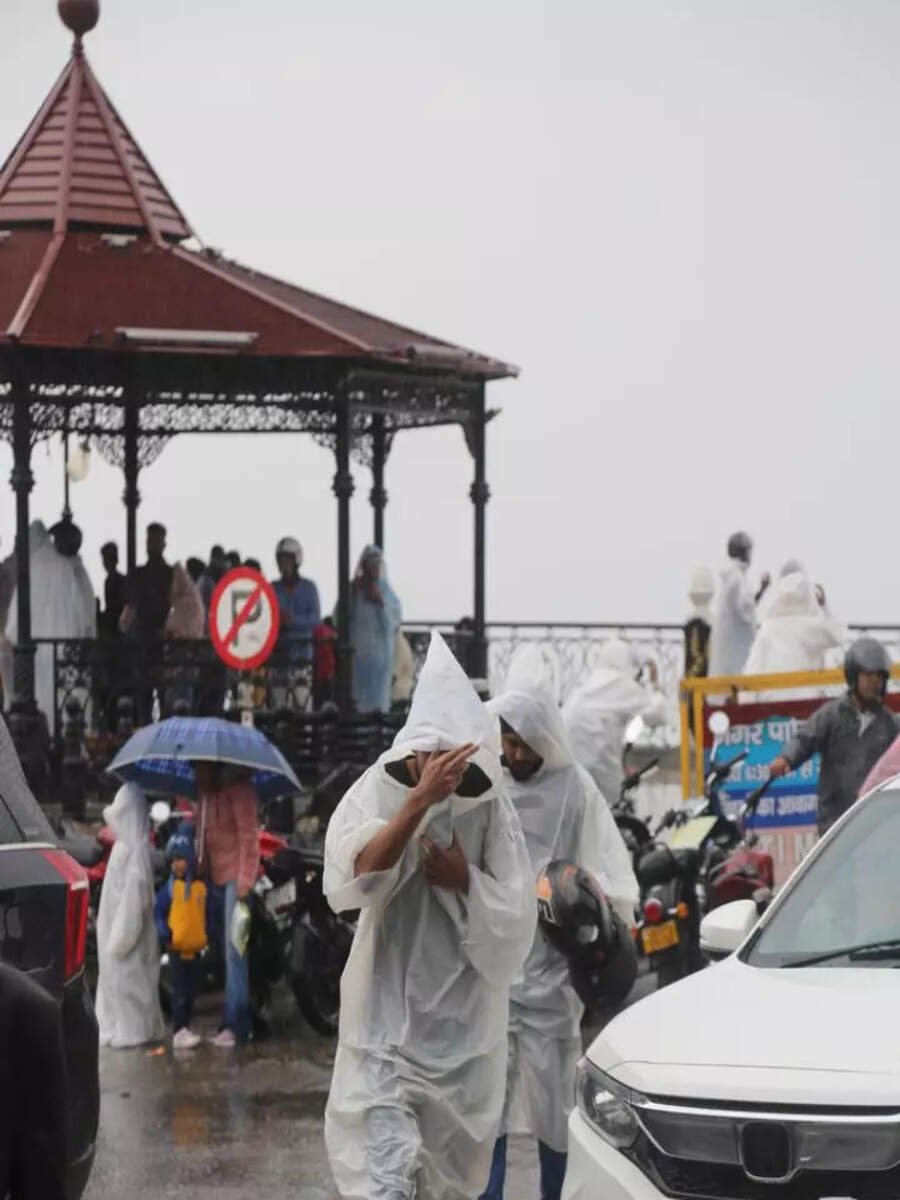Travel Guides & Articles
Hotel Association of India Urges Urgent GST Rationalisation to Boost Tourism, Jobs, and Investments in Hospitality for Vision 2047

Published on
August 22, 2025
By: Tuhin Sarkar
The Hotel Association of India has welcomed the Prime Minister’s call for GST rationalisation. The industry believes the reform is critical for competitiveness and growth. The current slabs are outdated and hold India back from its true tourism potential. A new GST framework can unlock jobs, investment, and foreign arrivals. This is not just a tax issue. It is about positioning India as a global leader in tourism.
Why GST Reform Matters for India’s Tourism
Tourism is one of the most powerful engines of growth. It generates employment, supports small businesses, and drives regional development. Yet India lags behind global competitors because of high taxation on hotels. GST rates directly influence affordability for travellers and shape the country’s competitiveness. For India to achieve Vision 2047 and attract 100 million foreign tourists annually, reform of GST is no longer optional. It is a necessity.
Current GST Structure and Its Challenges
At present, hotel rooms priced up to ₹7,500 per night fall under the 12 percent GST bracket. This threshold was set six to seven years ago. Since then, inflation and rising costs have made this structure outdated. Hotels priced above this bracket fall into the 18 percent slab, which is considered globally prohibitive. Such rates push tariffs higher and risk pricing India out of international competition. The Hotel Association of India has urged policymakers to revise the threshold to ₹15,000 per night. This adjustment would align taxation with inflation and make Indian hotels more affordable to global travellers.
The Case for a Uniform 5 Percent GST
The Hotel Association of India has gone further in its recommendations. It has called for a uniform GST rate of five percent across hotels, restaurants, and tourism services, with full input tax credit. This would simplify compliance, reduce administrative burden, and enhance ease of doing business. Such a move would also encourage investment and create thousands of jobs. Simplified taxation makes the industry more attractive to investors. It also improves transparency and ensures higher efficiency in the sector.
Employment and Inclusive Growth Opportunities
Tourism contributes directly to employment creation. It also drives inclusive growth by supporting micro, small, and medium enterprises across India. From food supply chains to transport services, the impact of tourism goes far beyond hotels. With the right policies, the sector can contribute ten percent of India’s GDP. The GST reform, combined with broader tourism policy measures, would be a catalyst for this transformation. It would make India a stronger competitor in the global tourism race.
India’s Vision 2047 and the Role of Tourism
India has set a bold goal for its centenary of independence in 2047. The vision includes attracting 100 million foreign tourists annually. Tourism is central to this ambition. The Hotel Association of India has been vocal in linking tax reforms to this long-term target. Rationalising GST is essential to position India among the top five global tourism destinations. Without reform, the high tax rates will remain a barrier. With reform, India can compete with leading global markets and offer affordable hospitality without compromising quality.
The Global Benchmarking Gap
When compared with global destinations, India’s GST rates are uncompetitive. Countries competing for international tourists often apply lower taxes on hotels. Many markets in Asia and Europe have rates well below India’s 18 percent. This makes India less attractive to cost-sensitive travellers. It also discourages long-haul visitors who compare packages across multiple destinations. If India wants to match its competitors, GST must be rationalised to align with global benchmarks.
The Push for Investment and Infrastructure Growth
High tax rates reduce demand. Reduced demand discourages investment. This cycle prevents the hospitality industry from achieving its true scale. Rationalised GST would break this cycle. By lowering the tax burden, demand would increase, revenue would rise, and new investments would flow into the sector. Investors are more likely to commit when they see sustainable demand growth. India’s hotel infrastructure needs expansion to meet future tourism targets. The GST reform would play a central role in unlocking this expansion.
Balancing Revenue with Growth Potential
One argument against GST reform is the potential loss of tax revenue. However, industry experts believe that rationalisation would boost overall demand and expand the tax base. A simplified, lower rate with input tax credit would encourage compliance and reduce leakages. Over time, this would generate more revenue than the current complex structure. Growth in foreign arrivals would also increase foreign exchange earnings, offsetting any short-term revenue concerns.
Regional Competitiveness and Global Positioning
India is competing not just with its neighbours but with every global destination. Southeast Asian countries like Thailand, Vietnam, and Malaysia offer attractive hospitality packages with lower tax burdens. Europe has also rationalised hospitality taxes to strengthen its tourism flows. India cannot afford to lag behind. Rationalisation is not just about domestic reform; it is about positioning India as a serious contender in the global tourism market.
Response from Policymakers and Stakeholders
The announcement from the Prime Minister on 15 August 2025 has brought renewed hope to the sector. The Finance Minister, who chairs the GST Council, has received formal representation from the Hotel Association of India. Industry leaders see this as a turning point. The government’s willingness to consider rationalisation indicates recognition of the sector’s importance. What matters now is the speed and scale of reform. The hospitality industry has made it clear that delay will hurt competitiveness and cost India valuable market share.
Wider Economic Impact of Reform
GST rationalisation will not only support tourism but also ripple through the wider economy. Travel and hospitality drive spending across multiple sectors, from aviation to handicrafts. Local communities benefit from job creation and skill development. Lower taxes encourage domestic tourism as well, creating a double boost for the economy. Rationalisation would therefore support both foreign arrivals and local travellers, expanding the market in both directions.
Industry Commitment to Partnership with Government
The Hotel Association of India has reaffirmed its commitment to working with policymakers. The goal is to establish a fair and progressive GST framework. Such a framework must balance the government’s revenue needs with the industry’s growth potential. Collaboration between government and industry is the key to success. India has the talent, resources, and destinations to become a global leader. What it needs is an enabling policy environment.
Looking Ahead: Seizing the Moment
The time for GST rationalisation is now. India is at a crossroads in tourism. It has the potential to be one of the top five destinations in the world. But high tax rates are a roadblock. Rationalisation can remove this barrier, unlock growth, and deliver the jobs and investments the country urgently needs. This is about more than numbers. It is about securing India’s place on the global tourism map. The world is watching. India must act quickly to seize the opportunity.
Travel Guides & Articles
Flood and Rain Alert in India: Places you should avoid travelling right now!

Mumbai
Mumbai, every year faces challenges during the monsoons. And this year too, the state is experiencing heavy rainfalls, causing waterlogging, traffic, and travel delays. The IMD forecasts continued heavy spells over the next few days so it is suggested to avoid travel through flooded regions.
Travel Guides & Articles
Agoda Reports 68% Growth in Travel Interest from India to Japan

New Delhi – Indian travelers are showing increasing interest in Japan, with Agoda data revealing a 68% year-on-year increase in searches between 15 May and 15 August 2025, compared to the same period last year.
Among the most searched destinations, Tokyo, Osaka, and Kyoto lead the list, recording growth of 59%, 158%, and 53% year-on-year respectively. Osaka stood out with the highest uptick in travel interest, underlining its rising popularity for city experiences and proximity to attractions such as Universal Studios Japan and Nara deer park.
Beyond the top three, Agoda’s data revealed rising interest from Indian travelers in Japanese destinations including Fujikawaguchiko (+36%) and Sapporo (+18%) in the top five, followed by Hakone (+46%), Okinawa (+47%), Fukuoka (+14%), Yokohama (+20) and Nagoya (+41%) rounding out the top ten. Notably, Nagoya entered the top ten for the first time this year, replacing Narita.
Agoda’s latest data reveals that Indian travelers are showing growing interest in a wider variety of Japanese destinations. In addition to traditional urban favorites, many of the top choices, such as Fujikawaguchiko, Hakone, and Sapporo, are celebrated for their scenic landscapes and leisure experiences, indicating a growing preference for nature and relaxation. Others, like Okinawa and Fukuoka, offer unique cultural and coastal experiences. This trend highlights a shift toward discovering a broader variety of Japan’s diverse regions, from mountain retreats to vibrant cities and coastal escapes.
Gaurav Malik, Country Director, Indian Subcontinent & Indian Ocean Islands, said, “Japan’s mix of modern cities, cultural heritage, and natural beauty is striking a chord with Indian travelers like never before. What we are seeing is that travelers are not only choosing traditional hotspots like Tokyo but are also exploring beyond, with Osaka and other cities quickly gaining popularity. Families can enjoy theme parks and kid-friendly attractions, couples can chase romantic escapes in Kyoto and Hakone, while groups of friends can opt for leisure getaways in places like Okinawa. At Agoda, we’re making it easier to plan these journeys end-to-end, with convenient choices for flights, stays, and curated experiences across Japan.”
The demand also reflects broader travel trends, with greater flight connectivity, simplified visa processes, and rising interest in experiential travel driving demand. From city discovery in Tokyo to cultural immersion in Kyoto, relaxing hot springs in Hakone, and scenic escapes around Mount Fuji, Japan is firmly establishing itself as a must-visit destination for Indian travelers planning both short breaks and longer holidays.
Travel Guides & Articles
Ganesh Chaturthi Special: Meet Parbati Barua, The Assam Royal Who Broke Barriers As India’s First Lady Mahout And Is Called ‘Daughter Of Elephants’ | Travel

Ganesh Chaturthi Special: Meet Parbati Barua, The Assam Royal Who Broke Barriers As India’s First Lady Mahout And Is Called ‘Daughter Of Elephants’. Credit: Facebook
As India prepares for Ganesh Chaturthi 2025, welcoming Lord Ganesha, who is revered as the remover of obstacles and the symbol of wisdom, there is perhaps no better time to reflect on the extraordinary life of a woman whose work embodies the spirit of the festival. She is Parbati Barua, India’s first female mahout, widely known as the Hasti Kanya or “Daughter of Elephants.”
For more than five decades, Parbati Barua has devoted her life to taming, caring for, and conserving elephants—breaking through the gender stereotypes of a field historically reserved for men. Her journey is not only a story of courage, but also an example of India’s deep cultural and spiritual reverence for elephants as well as indigenous knowledge.
A Wild Calling
Born on March 14, 1953, into the royal family of Gauripur in Assam, Parbati was the daughter of Late Prakritish Chandra Barua, the last ruler of Gauripur, who was both a hunter and an elephant expert with nearly 40 elephants in his royal stables. While her lineage and education—she graduated in Political Science from Gauhati University—might have suggested a path in academia or public life, her destiny lay elsewhere.
At just 14 years old, Parbati domesticated her first elephant in the Kochugaon forest of Assam. From 1975 to 1978, she successfully tamed 14 wild elephants using the traditional Assamese technique of Mela Shikar, where elephants are captured with a lasso rather than tranquilizers. Over the course of her career, she has trained more than 500 elephants.
Of Conservation & Care
Parbati Barua’s contributions extend far beyond taming. She has worked alongside forest departments in Assam, West Bengal, Kerala, Uttarakhand, and Uttar Pradesh, offering her expertise in training mahouts, resolving human-elephant conflicts, and treating injured or ailing elephants with herbal remedies. In an interview with the New Indian Express, when asked whether elephants are better than human beings, she promptly said, “Hundred per cent. Human beings can be cruel. Also, like humans, each elephant has a unique personality. There are introverted and extroverted elephants. There are leaders and followers. Some are very social. Most are benevolent and kind-hearted, and have enormous patience. Only when they reach the limit of their patience do they get angry. They love children, and will never harm them.”
Her skills have been sought not just in India but internationally. She has represented India at global conferences on elephants, from Bangkok in 2001 to workshops in Tamil Nadu, Jaldapara, and North Bengal, and contributed research on the status of Asiatic elephants. She also served as a member of the Asian Elephant Specialist Group of the International Union for Conservation of Nature (IUCN).
A Lifetime Of Recognition
For her tireless work, Parbati Barua has been honoured with numerous awards:
- Global 500 Roll of Honour (1989) from the United Nations Environment Program (UNEP).
- Honorary Chief Elephant Warden of Assam (2003), conferred by the Assam government.
- Asom Gaurav Award (2023), Assam’s highest civilian honour.
- Lifetime Achievement recognitions from wildlife and conservation groups, including Nature’s Warrior Jury Award (2023).
In 2024, Parbati was also honoured with a Padma Shri for her contributions to the welfare of elephants and the indelible mark she left on India’s conservation story.
Travel News – Find latest news and tips based on Indian and World travel including top 10 travel destination, tourism information, how to reach visit and more at Times Now.
-

 Business4 days ago
Business4 days agoThe Guardian view on Trump and the Fed: independence is no substitute for accountability | Editorial
-
Tools & Platforms3 weeks ago
Building Trust in Military AI Starts with Opening the Black Box – War on the Rocks
-

 Ethics & Policy1 month ago
Ethics & Policy1 month agoSDAIA Supports Saudi Arabia’s Leadership in Shaping Global AI Ethics, Policy, and Research – وكالة الأنباء السعودية
-

 Events & Conferences3 months ago
Events & Conferences3 months agoJourney to 1000 models: Scaling Instagram’s recommendation system
-

 Jobs & Careers2 months ago
Jobs & Careers2 months agoMumbai-based Perplexity Alternative Has 60k+ Users Without Funding
-

 Funding & Business2 months ago
Funding & Business2 months agoKayak and Expedia race to build AI travel agents that turn social posts into itineraries
-

 Education2 months ago
Education2 months agoVEX Robotics launches AI-powered classroom robotics system
-

 Podcasts & Talks2 months ago
Podcasts & Talks2 months agoHappy 4th of July! 🎆 Made with Veo 3 in Gemini
-

 Education2 months ago
Education2 months agoAERDF highlights the latest PreK-12 discoveries and inventions
-

 Podcasts & Talks2 months ago
Podcasts & Talks2 months agoOpenAI 🤝 @teamganassi





















